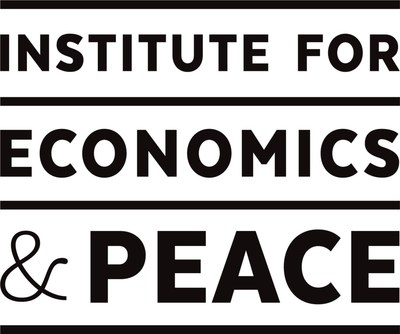 |
LONDON, June 12, 2019 /PRNewswire/ --
Key Results
Climate Change Highlights
GDP/Economic Cost of Violence Highlights
The 13th edition of the annual Global Peace Index (GPI) report, the world's leading measure of global peacefulness, reveals that the average level of global peacefulness improved for the first time in five years. However, despite improvement, the world remains considerably less peaceful now than a decade ago, with the average level of peacefulness deteriorating by nearly 4 per cent since 2008. This year's report includes new research on the possible effects of climate change on peace.
Eighty-six countries improved their score in the 2019 report, whilst 76 deteriorated. Iceland remains the most peaceful country in the world, a position it has held since 2008. It is joined at the top of the index by New Zealand, Austria, Portugal, and Denmark. Bhutan has recorded the largest improvement of any country in the top 20, rising 43 places in the last 12 years.
Afghanistan is now the least peaceful country in the world, replacing Syria, which is now the second least peaceful. South Sudan, Yemen, and Iraq comprise the remaining five least peaceful countries. This is the first year since the inception of the index that Yemen has been ranked amongst the five least peaceful countries.
Produced by the international think-tank the Institute for Economics & Peace (IEP), the GPI report presents the most comprehensive data-driven analysis to-date on peace, its economic value, trends, and how to develop peaceful societies. The report covers 99.7 per cent of the world's population and uses 23 qualitative and quantitative indicators from highly respected sources to compile the index. These indicators are grouped into three key domains: Ongoing Conflict, Safety and Security, and Militarisation.
Steve Killelea, Founder and Executive Chairman of the IEP, said: "Although peace has improved in the 2019 GPI, a deeper analysis finds a mixture of positive and negative trends. Whilst the conflicts that have dominated the past decade, such as in Iraq and Syria, have begun to abate, new conflicts have emerged in Yemen, Nicaragua and Turkey, resulting in the bottom ten countries in the index declining by more than the global average – increasing the global inequality in peace."
Four of the nine regions in the world became more peaceful over the past year. The largest increase in peacefulness occurred in the Russia and Eurasia region, followed by the Middle East and North Africa. In both regions, the number of deaths from conflict declined in Ukraine and Syria respectively. The fall in conflict deaths has been mirrored by a fall in deaths from terrorism.
Two of the three GPI domains deteriorated over the past decade, with Ongoing Conflict deteriorating by 8.7 per cent and Safety and Security deteriorating by 4 per cent. However, contrary to public perception, the Militarisation domain has recorded a 2.6 per cent improvement since 2008. The number of armed services personnel per 100,000 people has fallen in 117 countries, and military expenditure as a percentage of GDP fell in 98 countries, with only 63 countries increasing their spending.
Steve Killelea said: "Many of the trends recorded over the last decade highlight the complexity of global peace. Clearly it is good news that state sponsored terror has declined markedly over the last decade, with 62 countries improving their scores while only 42 deteriorated. However, incarceration shows the opposite trend with 95 countries inceasing the incarceration rate compared to 65 that improved. The US has reduced its incarceration rate by 11 per cent over the last decade, however it still has the second highest incarceration rate in the world."
The report also analyses the security risks posed by climate change. Analsysis in the report finds that an estimated 971 million people live in areas with high or very high exposure to climate hazards, with 400 million of these people living in countries with low levels of peace. Ten per cent of these people, or 103.7 million, are living in areas of countries ranked in the bottom 25 countries on the GPI: South Sudan, Iraq, Libya, the Democratic Republic of the Congo, Sudan, North Korea, Nigeria and Mexico.
The economic impact of violence on the global economy in 2018 decreased for the first time since 2012, decreasing by 3.3 per cent, to $14.1 trillion. This figure is equivalent to 11.2 per cent of the world's economic activity or $1,853 per person. The largest improvement was in armed conflict, owing to a fall in the intensity of conflict in Syria, Colombia and Ukraine. There was also a substantial reduction in the economic impact of terrorism, which fell by 48 per cent from 2017 to 2018. For the ten countries most affected by violence, the average impact was equivalent to 35 per cent of their GDP, compared to just 3.3 per cent in the world's most peaceful countries. Syria suffered the worst at 67 per cent.
Regional overview:
For more information, visit www.visionofhumanity.org.
NOTES TO EDITORS
The full GPI report, articles and interactive maps are available at: www.visionofhumanity.org
Twitter: https://twitter.com/GlobPeaceIndex (#GlobalPeace19)
Facebook: www.facebook.com/globalpeaceindex
About the Global Peace Index (GPI)
This is the 13th edition of the GPI: the world's leading measure of global peacefulness produced by the Institute for Economics and Peace (IEP). It gauges on-going domestic and international conflict, safety and security in society, and the degree of militarisation in 163 countries and territories by taking into account 23 indicators.
About the Institute for Economics and Peace
IEP is an international and independent think tank dedicated to shifting the world's focus to peace as a positive, achievable and tangible measure of human well-being and progress. It has offices in Sydney, Brussels, New York, The Hague, Mexico City and Harare.